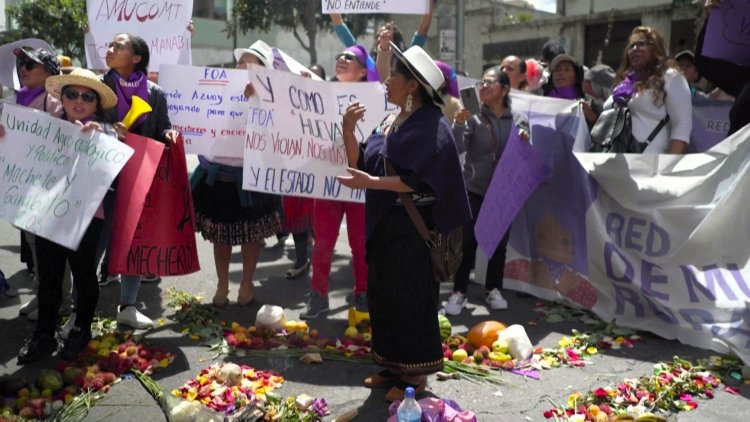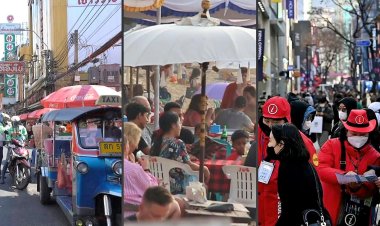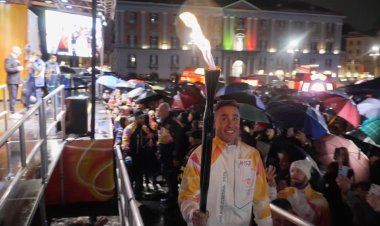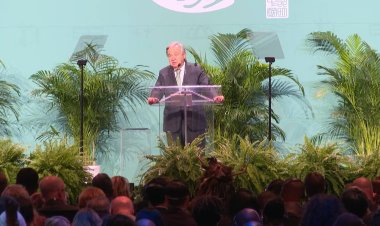Ecuador's Flare Protests

A hundred protesters, mostly women and Amazonian indigenous people, demanded in front of the Constitutional Court of Ecuador the compliance with a ruling that forces the State to turn off some 400 flares where gas from oil extraction is burned.
The days of the lighters have been numbered since 2021, when the Provincial Court of Sucumbíos determined that their presence violates the environmental rights and health of the population.
However, the protesters point out that the local court's ruling is not fulfilled and these lighters continue to spew tongues of fire into the middle of the jungle, affecting the lives of residents of the provinces of Sucumbíos, Orellana, Pastaza and Napo.
The initial lawsuit was filed by nine girls from Sucumbíos and Orellana - through their lawyers - who claim their right to live in a healthy environment.
Some protesters wore masks of monkeys and jaguars.
Shouting "justice that takes too long is not justice," they expressed their discontent with the Constitutional Court, which has not yet examined an extraordinary protection action so that those affected receive reparation measures.
"This case has been in the Constitutional Court for two years and is not moving at all. In two years, more than 20 fellow women with cancer have died in Sucumbíos," Pablo Fajardo, lawyer in the case, said.
According to the state oil company Petroecuador, between January 2022 and March 2023, the company turned off 112 burners, which have been in operation since 1977.
The gas released by the flares is now transferred by gas pipelines to stations where it is used in electricity generation and heating systems.
However, activists report that new lighters have appeared.
In 2020, the NGO Acción Ecológica registered 447 lighters operating in the Ecuadorian Amazon, where most of the crude oil, Ecuador's main export product, is extracted.















